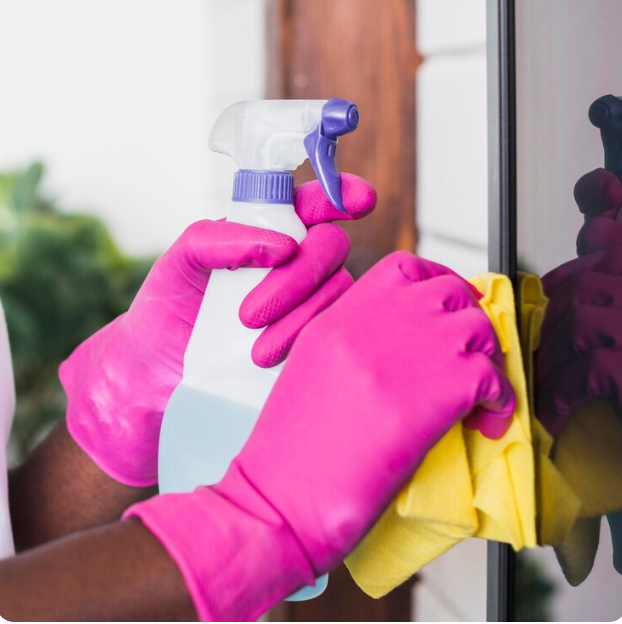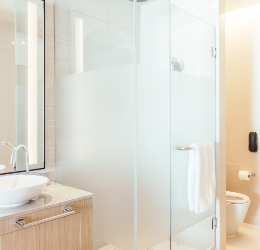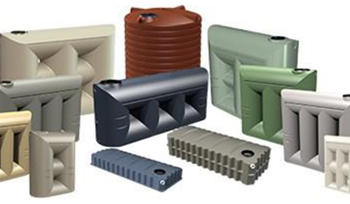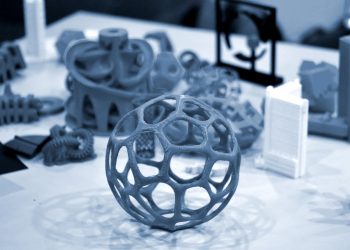CPAP Mask: A Key Solution for Managing Sleep Apnea
Sleep is essential for health and wellbeing, but for individuals with sleep apnea, restful nights can be difficult to achieve. One of the most effective treatments for this condition is the use of a CPAP mask, which works in conjunction with a continuous positive airway pressure machine to keep airways open throughout the night. For many people, this device transforms their sleep quality, energy levels, and overall health.
Understanding Sleep Apnea and Its Challenges
Sleep apnea is a disorder where breathing repeatedly stops and starts during sleep due to blocked airways. This can lead to loud snoring, restless nights, and fatigue during the day. Left untreated, sleep apnea may contribute to serious health risks such as high blood pressure, heart disease, diabetes, and reduced cognitive function.
The most common treatment is CPAP therapy, which uses air pressure to prevent the airway from collapsing. At the heart of this therapy is the CPAP mask, the device that delivers air directly and comfortably to the patient.
How a CPAP Mask Works
The CPAP mask is connected to a CPAP machine that generates a steady flow of pressurised air. The mask fits securely over the nose, mouth, or both, depending on the type, ensuring the airway remains open. By keeping breathing consistent, CPAP therapy allows patients to enjoy uninterrupted sleep, reducing daytime fatigue and lowering the risk of associated health issues.
There are several styles of masks available, each designed to meet individual needs and comfort preferences. Nasal masks cover the nose, full-face masks cover both the nose and mouth, and nasal pillows fit directly at the nostrils.
The Benefits of Using a CPAP Mask
The most immediate benefit of using a CPAP mask is improved sleep quality. By preventing airway obstruction, CPAP therapy reduces snoring and frequent waking, allowing patients to achieve deep, restorative sleep.
Better sleep leads to improved daytime energy and concentration. Many people report feeling more alert and productive once they begin consistent CPAP therapy.
Long-term health benefits are equally significant. Regular use of a CPAP mask helps lower the risks of cardiovascular problems, stabilises blood pressure, and reduces strain on the body caused by poor oxygen levels during sleep.
Choosing the Right CPAP Mask
Selecting the right CPAP mask is critical for effective therapy. Comfort and fit are the most important factors, as an ill-fitting mask can cause air leaks, skin irritation, or discomfort that discourages regular use.
Healthcare providers often recommend trying different styles to find the one that best suits the patient’s breathing habits and facial structure. For example, individuals who breathe through their mouths may benefit from a full-face mask, while those who prefer minimal coverage may find nasal pillows more comfortable.
Overcoming Common Challenges
Some users initially find it difficult to adjust to wearing a CPAP mask. Issues such as dryness, minor skin irritation, or the sensation of air pressure are common during the early stages. However, most of these challenges can be managed with proper adjustments, the use of humidifiers, or alternative mask styles.
Persistence is key, as consistent use provides the best results. Many people find that once they adapt, wearing the mask becomes a normal part of their nightly routine.
The Role of Technology in CPAP Masks
Modern CPAP mask designs are more advanced and user-friendly than ever before. Lightweight materials, quiet operation, and flexible headgear improve comfort and usability. Some masks even feature magnetic clips or quick-release systems for ease of removal during the night.
Innovations in technology have also improved airflow control and reduced the bulkiness of older models, making CPAP therapy more accessible and less intrusive.
Why Regular Maintenance Matters
Maintaining a CPAP mask is crucial for hygiene and effectiveness. Masks should be cleaned regularly to prevent the buildup of bacteria and allergens. Replacing cushions, headgear, and other components as recommended helps ensure a secure fit and consistent performance.
Healthcare providers often provide guidelines on cleaning and replacement schedules to help patients maintain their equipment properly.
Conclusion
For individuals living with sleep apnea, the CPAP mask is a life-changing tool. By providing steady airflow, it prevents airway collapse, supports deep sleep, and reduces health risks associated with the condition. With different mask styles available, patients can find options that suit their comfort and breathing needs, ensuring long-term success with CPAP therapy.
While adjusting to the mask may take time, the benefits far outweigh the challenges. Improved sleep, better health, and enhanced quality of life make the CPAP mask an essential solution for managing sleep apnea effectively.
Sleep is essential for health and wellbeing, but for individuals with sleep apnea, restful nights can be difficult to achieve. One of the most effective treatments for this condition is the use of a CPAP mask, which works in conjunction with a continuous positive airway pressure machine to keep airways open throughout the night. For many people, this device transforms their sleep quality, energy levels, and overall health.
Understanding Sleep Apnea and Its Challenges
Sleep apnea is a disorder where breathing repeatedly stops and starts during sleep due to blocked airways. This can lead to loud snoring, restless nights, and fatigue during the day. Left untreated, sleep apnea may contribute to serious health risks such as high blood pressure, heart disease, diabetes, and reduced cognitive function.
The most common treatment is CPAP therapy, which uses air pressure to prevent the airway from collapsing. At the heart of this therapy is the CPAP mask, the device that delivers air directly and comfortably to the patient.
How a CPAP Mask Works
The CPAP mask is connected to a CPAP machine that generates a steady flow of pressurised air. The mask fits securely over the nose, mouth, or both, depending on the type, ensuring the airway remains open. By keeping breathing consistent, CPAP therapy allows patients to enjoy uninterrupted sleep, reducing daytime fatigue and lowering the risk of associated health issues.
There are several styles of masks available, each designed to meet individual needs and comfort preferences. Nasal masks cover the nose, full-face masks cover both the nose and mouth, and nasal pillows fit directly at the nostrils.
The Benefits of Using a CPAP Mask
The most immediate benefit of using a CPAP mask is improved sleep quality. By preventing airway obstruction, CPAP therapy reduces snoring and frequent waking, allowing patients to achieve deep, restorative sleep.
Better sleep leads to improved daytime energy and concentration. Many people report feeling more alert and productive once they begin consistent CPAP therapy.
Long-term health benefits are equally significant. Regular use of a CPAP mask helps lower the risks of cardiovascular problems, stabilises blood pressure, and reduces strain on the body caused by poor oxygen levels during sleep.
Choosing the Right CPAP Mask
Selecting the right CPAP mask is critical for effective therapy. Comfort and fit are the most important factors, as an ill-fitting mask can cause air leaks, skin irritation, or discomfort that discourages regular use.
Healthcare providers often recommend trying different styles to find the one that best suits the patient’s breathing habits and facial structure. For example, individuals who breathe through their mouths may benefit from a full-face mask, while those who prefer minimal coverage may find nasal pillows more comfortable.
Overcoming Common Challenges
Some users initially find it difficult to adjust to wearing a CPAP mask. Issues such as dryness, minor skin irritation, or the sensation of air pressure are common during the early stages. However, most of these challenges can be managed with proper adjustments, the use of humidifiers, or alternative mask styles.
Persistence is key, as consistent use provides the best results. Many people find that once they adapt, wearing the mask becomes a normal part of their nightly routine.
The Role of Technology in CPAP Masks
Modern CPAP mask designs are more advanced and user-friendly than ever before. Lightweight materials, quiet operation, and flexible headgear improve comfort and usability. Some masks even feature magnetic clips or quick-release systems for ease of removal during the night.
Innovations in technology have also improved airflow control and reduced the bulkiness of older models, making CPAP therapy more accessible and less intrusive.
Why Regular Maintenance Matters
Maintaining a CPAP mask is crucial for hygiene and effectiveness. Masks should be cleaned regularly to prevent the buildup of bacteria and allergens. Replacing cushions, headgear, and other components as recommended helps ensure a secure fit and consistent performance.
Healthcare providers often provide guidelines on cleaning and replacement schedules to help patients maintain their equipment properly.
Conclusion
For individuals living with sleep apnea, the CPAP mask is a life-changing tool. By providing steady airflow, it prevents airway collapse, supports deep sleep, and reduces health risks associated with the condition. With different mask styles available, patients can find options that suit their comfort and breathing needs, ensuring long-term success with CPAP therapy.
While adjusting to the mask may take time, the benefits far outweigh the challenges. Improved sleep, better health, and enhanced quality of life make the CPAP mask an essential solution for managing sleep apnea effectively.









